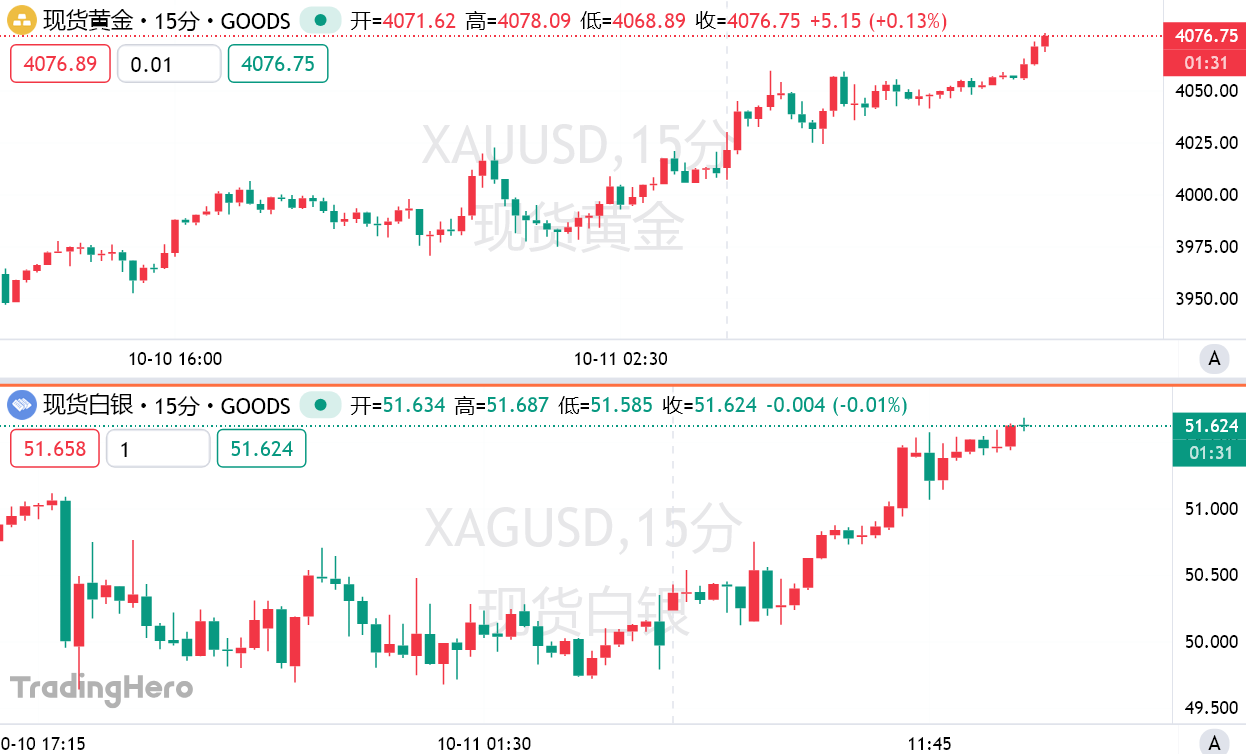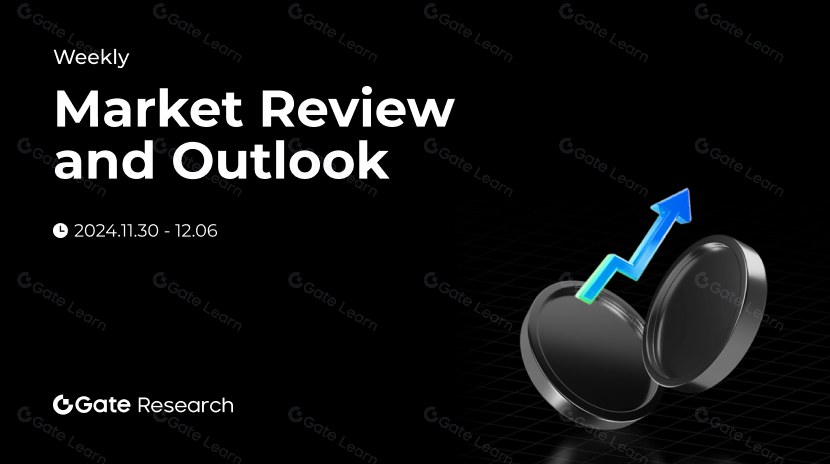Bank of America predicts: Spot gold $6,000 by next spring
Spot gold surged to $4,060 per ounce in early Monday trading. This set a new all-time high. In the afternoon, prices continued to climb, breaking through the $4,070 barrier and repeatedly hitting fresh records throughout the day.
Spot silver posted an even stronger rally, rising over 3.3% as of publication and trading at $51.63 per ounce. The historic short squeeze in the London market is escalating and continues to push silver prices close to the $52 mark. Platinum and palladium also saw significant gains.
Traders remained highly alert ahead of the U.S. government’s release of findings from its Section 232 investigation into critical minerals, which covers silver, platinum, and palladium. Market tension has heightened as worries grow that these metals might be subject to new tariffs, especially as freely available inventories in London have dropped sharply. This has contributed to the ongoing silver squeeze.

Financial markets saw dramatic volatility after Monday’s open. As anxiety eased slightly, markets opened at 22:00 UTC. Spot gold swung nearly $40—briefly dipping below $4,000 per ounce before rebounding sharply. New York copper futures rose more than 2% at one point. WTI and Brent crude oil futures both climbed nearly 3%. U.S. equity index futures bounced back, with Nasdaq 100 futures gaining over 1%. Bitcoin jumped nearly $1,000 in the short term, while safe-haven assets like the yen weakened and the dollar strengthened.
On Friday, a social media post by Trump wiped out $2 trillion in U.S. equity market value, sending the S&P 500 Index down 2.7%—its worst single-day performance since early April. This event highlights the ongoing impact of Trump’s aggressive trade policies on the global economy.
Sharp drops in risk assets have been rare lately. This may signal discord in market reactions to trade tensions. Since the tariff-driven selloff in April, the S&P 500 has soared on optimism about artificial intelligence and expectations for Federal Reserve rate cuts. The index is now valued near a 25-year high, leaving minimal cushion against adverse developments.
Michael O’Rourke of JonesTrading noted, “Throughout the summer, optimism in the U.S. stock market has significantly outweighed caution, and high complacency has made investors vulnerable. A selloff could become a much bigger correction.”
Chris Zaccarelli of Northlight Asset Management said October is historically one of the most volatile months, and the widely anticipated selloff has finally arrived. “We could see even greater volatility in the weeks ahead, but if the economy isn’t truly hurt, markets should rebound later this year, and buyers who stepped in on October’s dip may be rewarded by year-end.”
Mark Newton of Fundstrat Global Advisors commented, “Whether the S&P 500 can bounce back to 6,800 this week or not, I believe last Friday’s deterioration further weakened breadth and momentum, which could trigger an autumn selloff.” The index closed Friday at 6,552.51. He also emphasized the importance of remaining vigilant, as cross-asset volatility has begun and could persist into next month.
Still, statements from Trump and Vice President Vance over the weekend indicate they are trying to calm shaken markets and reassure investors that escalation is not inevitable. Trump’s tone was notably more moderate, assuring that everything will work out.
Anna Wu, cross-asset strategist at Van Eck Associates Corp., said, “This doesn’t look like a repeat of April, as the market digested some of Friday’s oversold conditions and recovered from the lows.”
Michael Hirson and Houze Song of 22V Research noted, “This is an extremely risky time for global supply chains—including those powering AI—but importantly, neither side has acted on their threats yet. There’s still room for compromise, and Trump would face major political risks if he followed through.”
Despite Monday’s rebound in risk assets, gold’s rally continued. Traders are still watching for signs of a U.S. government reopening and data releases that could influence Federal Reserve policy.
Kyle Rodda, analyst at Capital.com, said, “Trade turbulence may settle down, but it never completely disappears. That’s a positive for gold.”
According to Fxempire, gold’s main technical trend remains bullish. Last Friday’s close kept prices well above support at $3,939.38 and $3,888.43. Momentum remains strong unless the market breaks below $3,819.42, which would signal a near-term downturn. With gold in record territory, there are no traditional resistance levels above the current highs; psychological levels like $4,100 and $4,200 will be the next upside targets. On the downside, the 50-day moving average at $3,592.82 is the most reliable support right now.
Michael Hartnett of Bank of America wrote, “History can’t predict the future. In the last four bull markets, gold has averaged a 300% gain over 43 months. This suggests prices could reach $6,000 by next spring.”
Statement:
- This article is republished from xnews ( source ). Copyright belongs to the original author ( xnews ). If you have any objection to this republication, please contact the Gate Learn team for prompt resolution.
- Disclaimer: The views and opinions expressed are solely those of the author and do not constitute investment advice.
- Other versions of this article in different languages are translated by the Gate Learn team. Unless Gate is referenced, translated articles may not be copied, distributed, or reproduced.
Related Articles

Reflections on Ethereum Governance Following the 3074 Saga

Gate Research: 2024 Cryptocurrency Market Review and 2025 Trend Forecast

Gate Research: BTC Breaks $100K Milestone, November Crypto Trading Volume Exceeds $10 Trillion For First Time

NFTs and Memecoins in Last vs Current Bull Markets

Altseason 2025: Narrative Rotation and Capital Restructuring in an Atypical Bull Market
